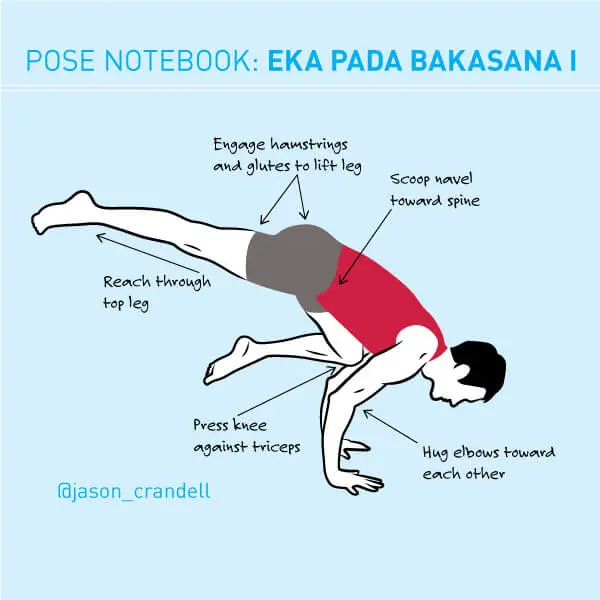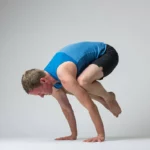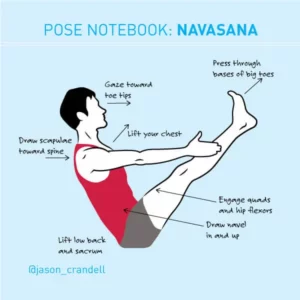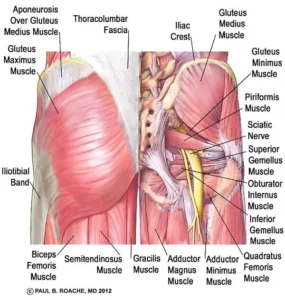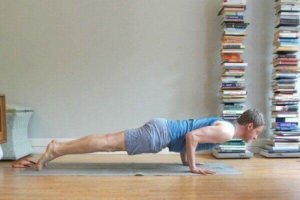If I had the choice of doing 108 Sun Salutations, doing 20 Upward Bows, spending 90 seconds in Handstand, or holding Eka Pada Bakasana on each side for 5 seconds, I’m not sure what decision I would make. Honestly. I pride myself on using leverage and technique to outwit difficult postures. I pride myself on my ability to break down advanced postures and make them more accessible for my students. But, aside from a few essential keys that I’ll share in a moment, Eka Pada Bakasana I is just a seriously difficult posture that requires a ton of strength—and a photographer that can work very, very fast. Nonetheless, the tenacity and humility that the pose builds, make practicing this posture a worthy endeavor.
Before tackling this pose, there are three things to keep in mind.
First, you’ve got to be able to practice Bakasana and Parsva Bakasana. Trust me, these postures are way easier. If these are hard postures for you, check out the Bakasana sequence and the Parsva Bakasana sequence. Second, it’s easier to start in Eka Pada Bakasana than to transition into it from Bakasana. I’ll walk you though this in the in tutorial below. Third, the higher you lift your hips in the pose, the more accessible it becomes. I’ll explain this in tutorial below, as well.WARM UP
Eka Pada Bakasana relies on strength, not flexibility. Since you don’t need to much range of motion to tackle this posture, you can keep your preparations fairly simple. A few shoulder openers such as Gomukhasana, reverse prayer, and Garudasana will warm up your shoulders and begin to prepare them for the load they will bear in this arm balance. Similarly, getting your entire body moving and breathing with several Sun Salutations is a good idea. Any style of salutation will do. Lastly, since Bakasana and Parsva Bakasana are similar, more accessible postures, you can use them to prepare your body effectively.
HOW-TO DO EKA PADA BAKASANA I
1. Begin in Downward-Facing Dog. Shorten your stride several inches so that your hands and feet are closer together. Step your right foot half the distance to your hands. You’ll be in an odd combination of a Down Dog that it is way too short and a lunge that is also too short.
2. Bend your elbows slightly. This will create a little shelf onto which you’ll place your right knee. Take a breath.
3. Lift your right foot off the floor, shift your upper body slightly forward, and place your right inner knee on top of your right elbow. Remember, your elbows need to be slightly bent so that you can place your knee on the ledge. Straight elbows don’t work in this pose.
4. Squeeze your right knee strongly against your elbow. Gravity is going to be pushing your knee off your elbow, so engage your adductors and hold tight!
5. Your almost there—you’ve just got the hard part to execute. Lean further forward with your chest like you’re moving your upper body into a Chaturanga. Then, push forward through your back foot and lift it off the ground.
6. LIFT YOUR HIPS, LIFT YOUR HIPS, LIFT YOUR HIPS!!! Do you hear me yelling? Lift your hips higher and higher and higher. Pull up through your center and LIFT YOUR HIPS! Lifting your hips will help you lift your leg. If you don’t lift your hips, you won’t be able to lift your leg.
7. As you LIFT YOUR HIPS, lift your back leg. If your hips are barely lifted and your back leg is parallel to the floor, gravity will have more of your body to push down against. Lifting your hips and leg gives you a slight mechanical advantage and you won’t have to work quite as hard.
8. Now that you’re in the pose, refine it with the instructions in the infographic!
9. Take a breath, or 2, or 3 in the pose before lowering and repeating on the second side.
IF I CAN’T DO EKA PADA BAKASANA I YET, WHAT SHOULD I DO INSTEAD?
If you’re unable to do Eka Pada Bakasana, you have the perfect excuse: it’s really !@#$ hard. To work toward the pose, you should do a combination of upper body, core, and back body strengthening. Try slowing down your motion from Plank to Chaturanga so that you build more upper body strength. Incorporating more Forearm Planks in your practice may help build the necessary core strength. Prone backbends like Locust will help strengthen your hamstrings and glutes, which need to fire in order to raise your back in Eka Pada Bakasana.
PART II: ANATOMY AND SEQUENCING FOR EKA PADA BAKASANA
WHICH MUSCLES DOES EKA PADA BAKASANA STRENGTHEN?
First and foremost, this pose strengthens your patience and humility muscle. The posture also strengthens the following muscle groups:
Your abdominals and pelvic floor
All of your abdominal and pelvic floor muscles are working to keep your pelvis lifted in Bakasana. Your transverse abdominis and rectus abdominis are working even more intensely than your obliques since the posture doesn’t include spinal rotation.
Your hip flexors
Your hip flexors, especially your psoas and illiacus, are working to flex your hip and help keep your knee stay on top of your elbow.
Your inner legs
All of your adductors are firing in Bakasana. Combined, they have two roles: to work with the psoas and illiacus to flex your hip, and to help hold your knee fixed against your outer upper arms.
Your hamstrings and glutes
Your hamstrings and glutes are working to lift your back leg and keep it suspended.
Your shoulders
Your shoulders play a huge role in Eka Pada Bakasana. Your rotator cuff group is working to stabilize the position of your upper-arms in their socket; your deltoids are working to support the weight of your body; your serratus anterior is working to broaden your scapulae; and, your pecs are working to support the weight of your body.
Your arms
Of all the muscles in your arms and hands, your triceps have the greatest duty in Eka Pada Bakasana. They are strongly contracted in order to resist the downward force of gravity.
WHICH MUSCLES DOES THIS POSE STRETCH?
Eka Pada Bakasana doesn’t stretch anything other than your patience.
{illustration by MCKIBILLO}
